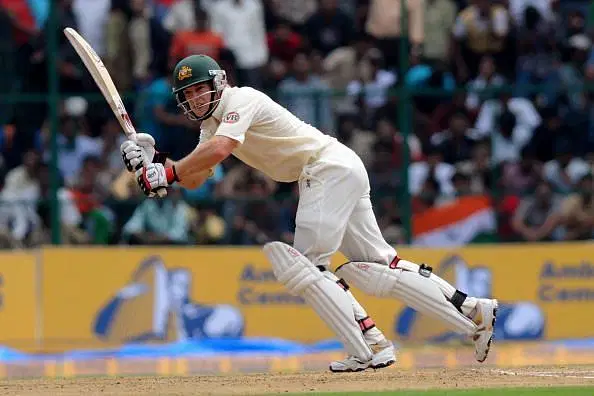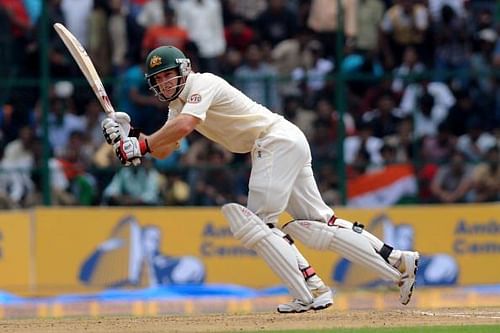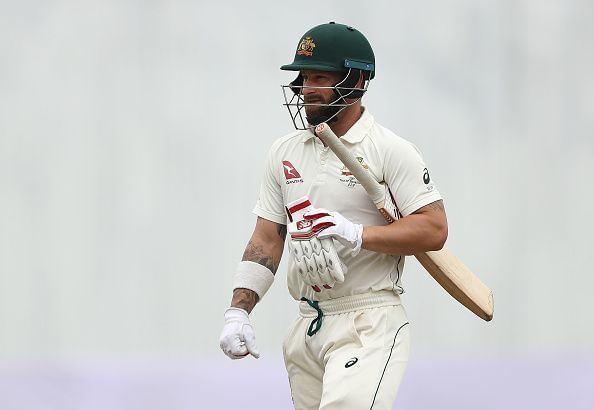
Tim Paine: From nowhere to Australia captain

It is one of the hardest things to recall that nearly nine years have passed since Tim Paine first represented Australia as a wicketkeeper-batsman, starting with ODIs and T20s in 2009 and most notably, featuring in the winning squad of the ICC Champions Trophy in South Africa the same year as a replacement for Brad Haddin.
Paine was being even touted as the future captain of his country as far back as in 2010, the year of his Test debut, which came in the same Lord's Test against Pakistan as the then chubby Steven Smith, who was in the team for his leg-spinners with Australia struggling to find an ideal replacement for Shane Warne. Paine did fairly well in his maiden Test series, and while in India later that year, hit 183 runs in four innings, including a 92 in a losing cause at Mohali, which still remains his highest Test score.
Then began a roller-coaster ride in Paine's life. That very summer in November 2010, with the Ashes in Australia around the corner, Paine injured his right index finger in the now-defunct Australian Cricketers Association All-Stars fixture, a tournament planned to kickstart the home summer. Though he then played for Australia until early 2011 – he was even the vice-captain to Cameron White in the T20I side – and then toured England as part of Australia A squad the next year. It required a total of seven surgeries to get his broken finger back on track. The same finger was damaged again in August 2011 during a training session for Tasmania after leading Australia A in Zimbabwe earlier in the year.
All in all, the Tasmanian inevitably fell down the selectors' radar when Brad Haddin was back for the 2011 ICC World Cup, until he too was sidelined with the introduction of Matthew Wade, who started with his ODI and Test career on the West Indies tour in 2012. That opportunity arose when Haddin pulled himself out of the tour out of concern for his daughter, who would be diagnosed with neuroblastoma, a rare form of children’s cancer.
Amidst all this, Paine was engaged in surgeries while Haddin was made vice-captain of the national side come the 2013 Ashes in England. Ever since, Haddin’s agility behind the stumps and ability to accumulate quick runs with the lower-order meant his position remained unquestionable, especially with both these characteristics going a long way in Australia regaining the Ashes during the return series at home during the 2013-14 summer.
A third wicketkeeper post Paine’s debut entered the scene when Haddin voluntarily skipped the Lord’s Test against England in 2015 to attend to his daughter, who again required attention for her illness, making way for Peter Nevill. Unfortunately, that appearance at Cardiff before the Lord’s game, where he dropped Joe Root – something which cost Australia dear – would turn out to be Haddin’s final appearance in national colours. He would be dropped for the next game at Edgbaston despite being available, a call which coach Darren Lehmann described as the “hardest decision I’ve had to make as a coach”.

Surely, Australia’s selectors – and the rest of the world – had already forgotten Paine by now, for it was five years ago that he had made his debut with hardly a handful of internationals to show in his CV. When Nevill was dropped during the 2016 home series against South Africa, they went back to Wade again, who would last only a solitary year.
But in early 2017, with Australia scheduled to play a three-match T20I series against Sri Lanka at home and a tour of India breathing down their neck, the first-choice players flew early to acclimatize to the conditions while a second-string squad took the field against the visiting Sri Lankans. One of those “second string” players in the squad was Paine. By virtue of his performances in the Big Bash League, he had won a place in the side, albeit when the preferred ones were absent.
Then came a twist – another one – in Paine’s career. Yet another Ashes series at home was knocking on the door with the selection panel losing patience with Wade’s lack of runs. Out of nowhere, eliminating the more obvious choices of Nevill and the younger Alex Carey, Paine entered the scene like a hero storming in in a Hollywood movie, despite having shunned the gloves for Tasmania, whose wicketkeeper, ironically, was Wade himself, who had returned home following a stint at Victoria.
Humour was in the air when Paine’s inclusion was confirmed for the Ashes, with jokes flying around that even coach Lehmann had a more latest first-class century than Paine did, in October 2006. But the then 32-year-old did not disappoint, scoring 192 runs at 48.00 against the likes of James Anderson and Stuart Broad. Just a month before his shocking inclusion, he had played for the World XI team in Pakistan, as part of efforts to bring cricket back to the terror-prone country.
But the drama was not over in his international career yet. In a horrific ball-tampering incident against South Africa at Cape Town, Smith, now the captain of the side, vice-captain David Warner and newcomer Cameron Bancroft would be found guilty of ball-tampering. Cricket Australia then went on to make Paine the stand-in captain mid-way into the game after both Smith and Warner were stood down from their leadership roles.
Soon, their participation in the next Test would be cancelled as one of the outcomes of the offence; and James Sutherland, the CA CEO, would appoint Paine as the captain, at least temporarily. Here he was, only 12 Tests old in almost eight years, taking over the baton from Smith, his co-debutant in Test cricket in 2010.
Touted as the next leader before a finger injury took him in reverse gear, Paine, 33 today, is set to take charge at Johannesburg. CA are yet to officially name a permanent replacement for Smith, as Paine may not be a long-term option with age against him – certainly, the likes of Mitchell Marsh, at 26, hold the edge – but fate has nevertheless finally brought him to where they thought he would soon belong.